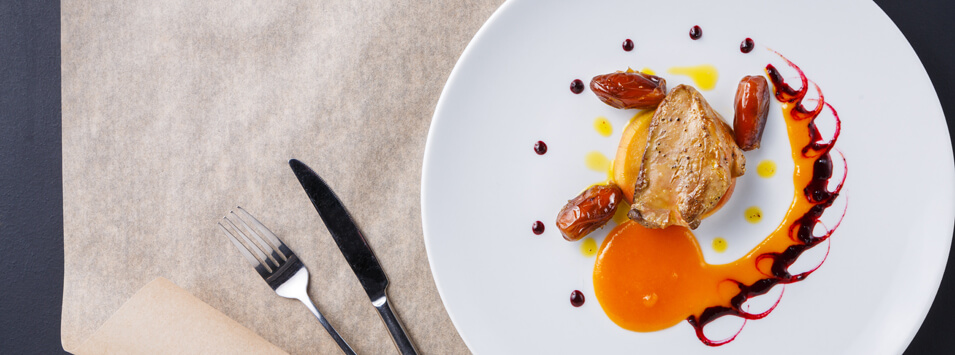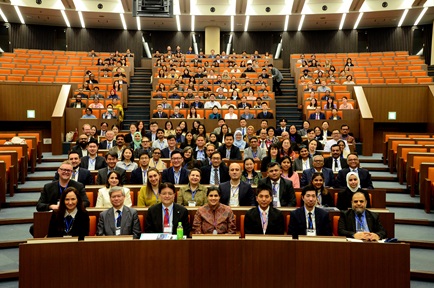The Celebrity Chef Phenomenon and Restaurants in Asia
A few chefs from the past acquired great fame during their lifetimes which lingers today, but the commonly understood modern idea of the celebrity chef is distinct.
By Joan Henderson, ACI Fellow & Associate Professor of Marketing and International Business at Nanyang Business School, Nanyang Technological University

A few chefs from the past acquired great fame during their lifetimes which lingers today, but the commonly understood modern idea of the celebrity chef is distinct. The label now covers food writers and cooks, who do not always have formal training or kitchen experience, as well as qualified chefs. The beginning of the phenomenon is usually traced to 1960s USA where television was instrumental in creating awareness and reputations, one notable example being Julia Child. Food programmes continue to be popular around the world, evidenced by dedicated television channels, and individuals with a following can exercise considerable influence over food choices and cooking habits.
Some of those labelled celebrity chefs have gained celebrity by performing mainly on television or through other media while others are celebrated for their outstanding culinary talent displayed in restaurant kitchens. The two roles can be combined, although an effective balance must be struck. A few practising celebrity chefs have been compared to rock stars and may have improved the standing of the profession while perhaps glamorising it as a career. It is also interesting how some prominent figures have become advocates of ethical food and healthy eating. An illustration is Jamie Oliver’s campaign aimed at ensuring ‘good, fresh and nutritious food’ for the world’s children. These initiatives have sometimes led to criticisms about hypocrisy when social and environmental objectives are in apparent conflict with commercial agendas.
Certain chefs have developed large and lucrative businesses using their names as brands. These can incorporate shops, cookery book and magazine publications, television shows, cookery schools, kitchenware and foodstuffs. Goods of other producers are also endorsed. Restaurants are a core business and of various types and prices. They are often associated with fine dining and are a tourism resource as seen in their promotion by Tourism Boards. Chefs of Asian origin working in the region and beyond are famous, but the highest profile celebrity chefs are frequently from Europe and North America. Their cooking is likely to be rooted in these food cultures, raising questions about the attractiveness of restaurant menus for those of other backgrounds and the extent to which adaptations are necessary.
Despite the challenges of foreign operations, it is appreciated and pursued as an expansion route by an increasing number of celebrity chefs. The phenomenon is observable worldwide, not least in Asia where several well-known Western chefs have opened restaurants. Singapore is a good example with restaurants by Mario Batali, Daniel Boulud, Alain Ducasse, Jamie Oliver, Wolfgang Puck, Gordon Ramsay and Joel Robuchon amongst others. Modes of restaurant operation include ownership and running, licenses, franchises, management, partnerships and strategic alliances. Each has its own advantages and disadvantages, but ownership is costly and the less expensive and more flexible alternatives appear to be preferred. Partnering luxury hotels is a regular practice for celebrity chef fine dining restaurants which can benefit both parties given their complementary positioning and the potential for synergies.
Celebrity chefs with international interests tend to have the most restaurants in the country where they are based, but some have a greater share outside national borders. Alongside European and North American venues, Tokyo and Shanghai are popular Asian options for Western chefs together with Hong Kong and Singapore. Robuchon in particular appears to favour Asia and has restaurants additionally in the capitals of Taiwan and Thailand as well as Macau. Two restaurants by Ducasse are scheduled to open in the gambling hub in 2019 and he has announced plans for another in Singapore’s Raffles Hotel when it reopens after the current refurbishment. Some locational decisions are unexpected such as the Vietnamese resort of Danang by Pierre Gagnaire whose restaurant is situated in the InterContinental hotel. The Saudi Arabian capital of Riyadh is another rather unusual choice by Gagnaire, although there is cluster of celebrity chef restaurants in the Gulf States centred on Dubai, Doha and Bahrain.
Despite differences by individual celebrity chef, there seems to be a pattern when venturing abroad of selecting major metropolises which regularly lead global city indices. The leaning is unsurprising given the defining characteristics of such cities which are prosperous centres of business and finance. They are places drawing capital, people and ideas from around the world to which they are very well connected by transport and communications networks. Populations are large and relatively cosmopolitan and there are high volumes of tourist traffic, especially for business. Hong Kong, Singapore and Tokyo are established global cities with these traits and this helps explain their appeal to restaurant investors and celebrity chefs. Openings in sites elsewhere in Asia reflect general economic advances and growing middle classes, alongside a thriving tourism industry.
While recent activity in the region suggests a degree of commercial confidence, there are reservations about the robustness of some celebrity chef restaurant businesses with past cases of setbacks and failures. A few enterprises have grown at too rapid a pace, paying insufficient attention to matters of finance and administration, and proved unsustainable. Celebrities and cooking styles may decline in popularity, replaced by fresh faces and approaches. Restaurants can be tarnished by negative publicity linked to the personal conduct of the chef. A recent instance is Mario Batali who was reported to have taken leave after admitting to sexual harassment in the wake of the 2017 Harvey Weinstein scandal.
Customer expectations are likely to be heightened when patronising a celebrity chef restaurant and consistent standards in food quality and service delivery must be maintained. Strict control is critical, yet its exercise becomes harder as the number of restaurants to rises and especially overseas. Sourcing of fresh ingredients essential to certain dishes can be a problem, even in an era of globalisation, as chefs move further away from their home base. They are in danger of being over-stretched and losing touch, highlighting the need for proper support and sound advisors. The fact that the chef probably visits the restaurant three or four times a year or less may also disappoint some diners.
Rivalry from established and new restaurants must also be faced and demand can be adversely affected by shifting culinary fashions and external events such as economic shocks. Eating and dining out and are aspects of a society’s culture and understanding of the local context is vital, but may be lacking. There are signs of a movement amongst consumers globally towards more casual dining environments which may have damaging consequences for some celebrity chef restaurants and could lead to further attempts to add less formal outlets to portfolios.
Some commentators have forecast the eventual demise of the upscale celebrity chef restaurant due to the desire for more relaxed settings and collaborations in which the emphasis is on the overall experience created by a team rather than on an individual. Such an outcome is debatable, but it seems that celebrity chefs and their restaurants will continue to evolve in response to wider changes occurring nationally and globally. One noteworthy foodservice trend is the growing popularity of emerging Asian cuisines in the West where Chinese food has a comparatively long history of acceptance and assimilation. There may therefore be as many opportunities for Asian celebrity chefs in the West as for Western celebrity chefs in Asia in the years ahead. Perhaps too the gender imbalance will be addressed and more female chefs will be recognised for their achievements in restaurant kitchens.
About the author
Joan C. Henderson is an ACI Fellow who has an MSc in Tourism from the University of Strathclyde in Glasgow and a PhD in Economics and Social Studies from the University of Edinburgh. She joined NTU in 1997 and is currently an Associate Professor in Nanyang Business School where she specialises in Tourism Studies. Her research interests include tourism crisis management, destination development and marketing and the presentation of heritage as a tourist attraction. The focus is on such questions within a global context with particular reference to Singapore and the Asia Pacific region. Professor Henderson’s publications include international journal papers, book chapters and a book. She reviews regularly for several journals and is a member of the Editorial Board of four tourism and hospitality journals.







